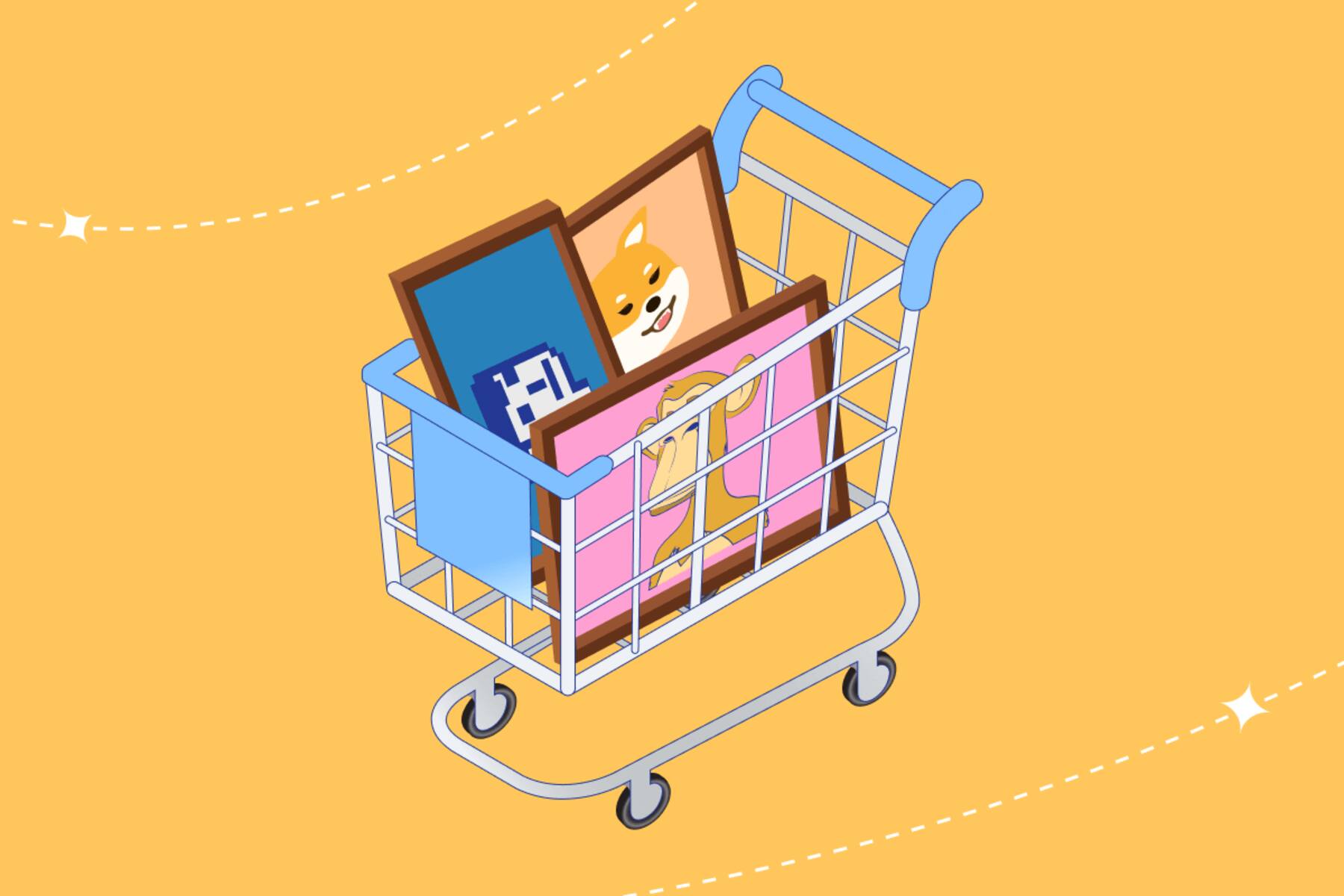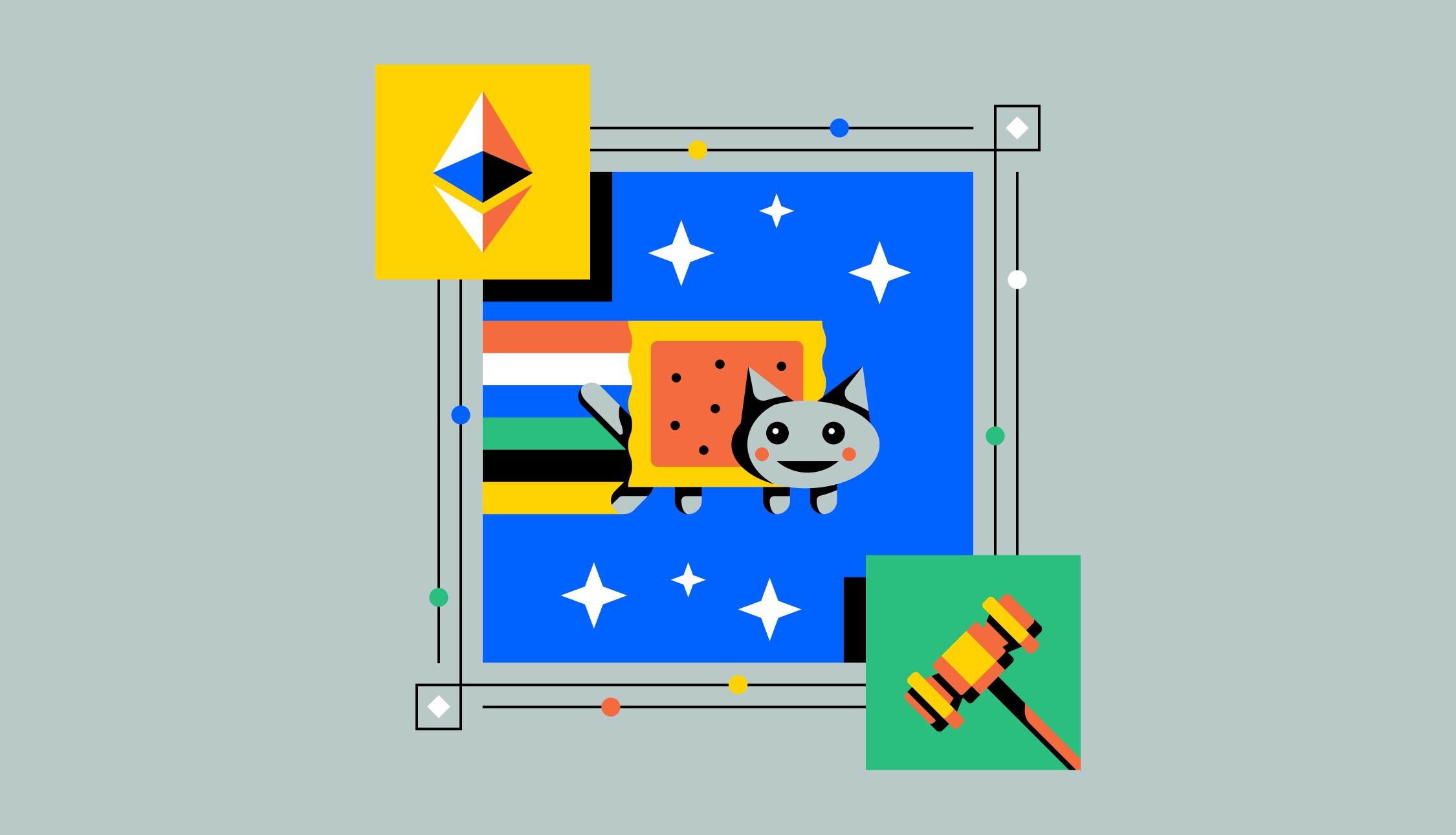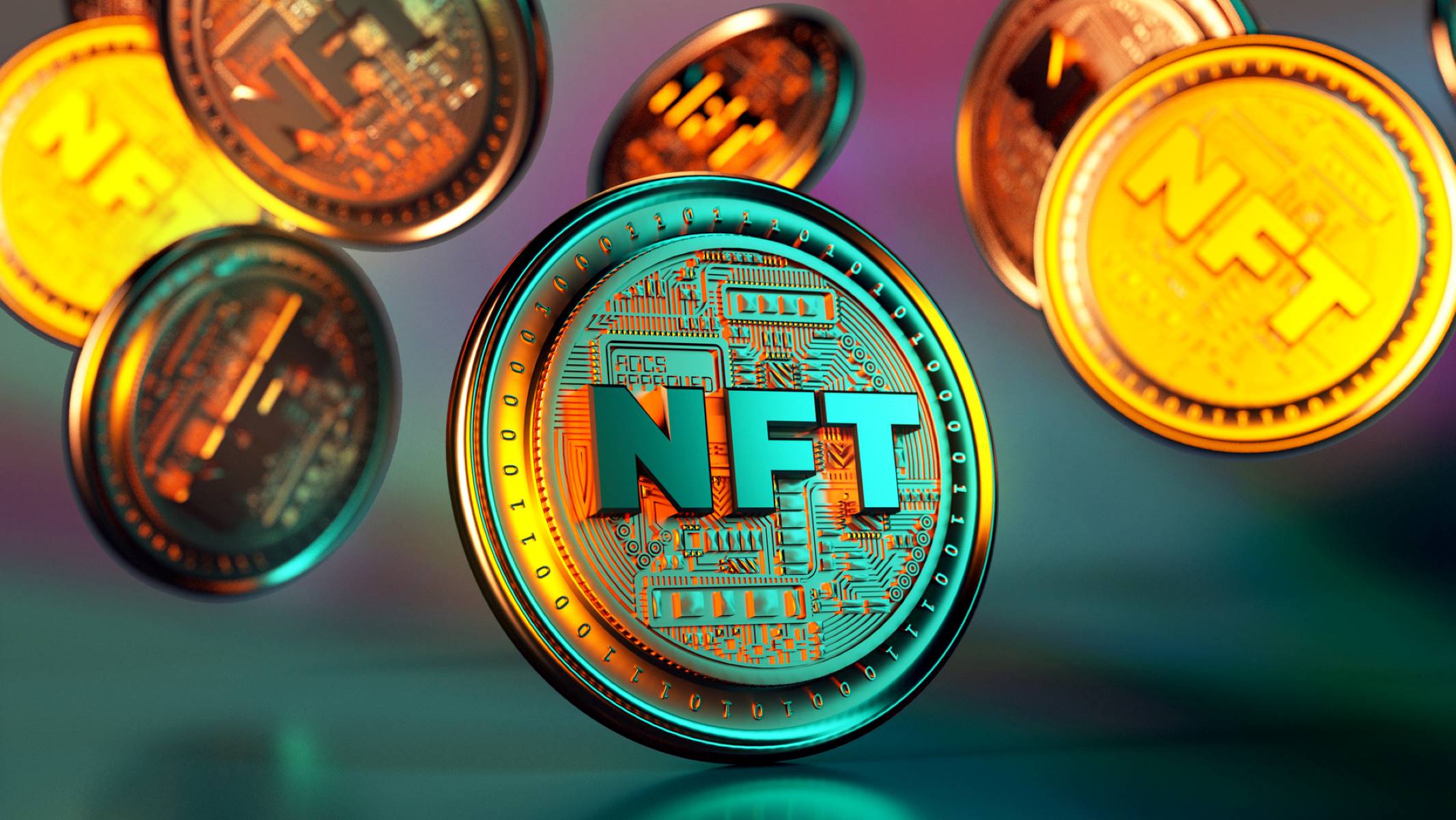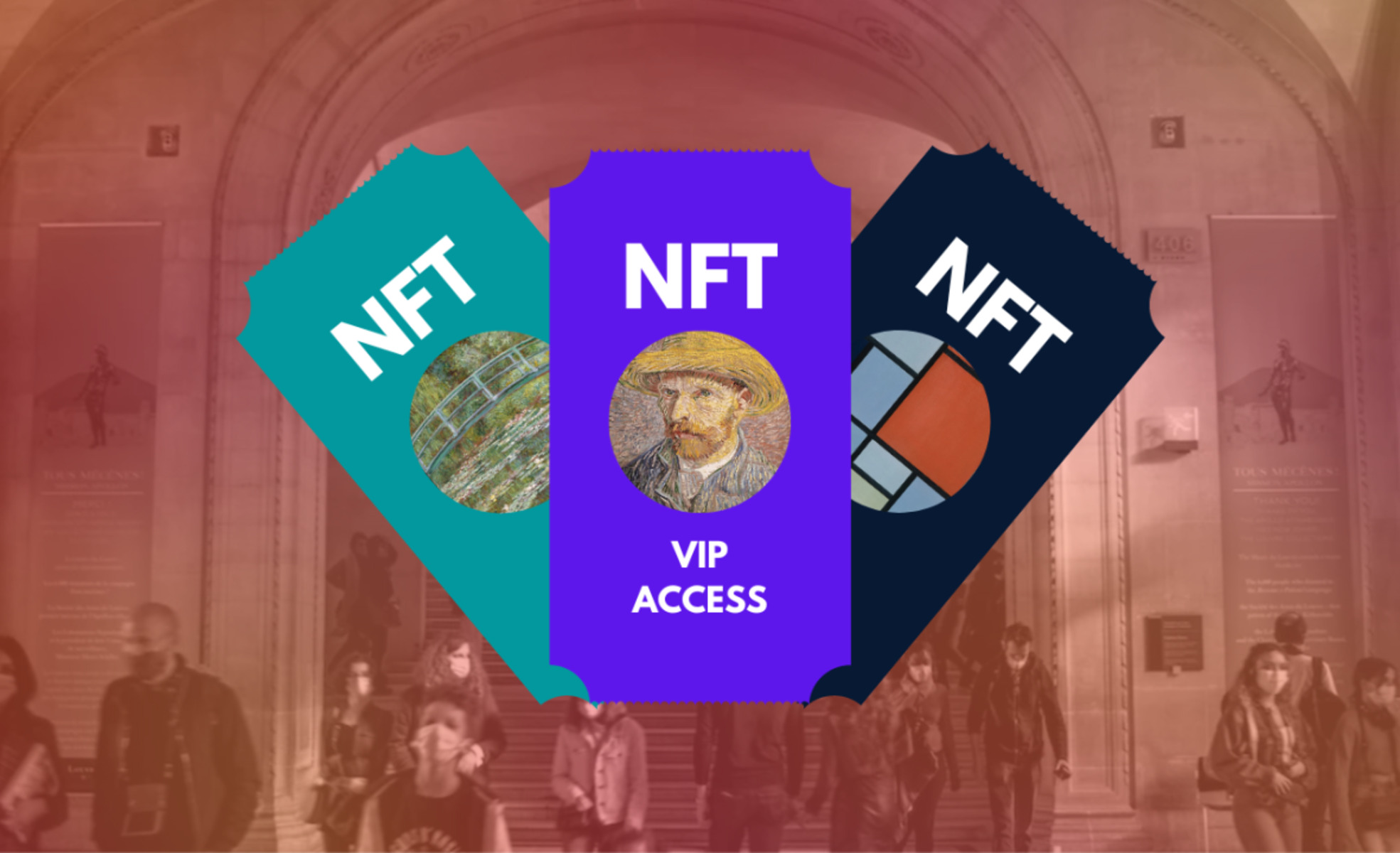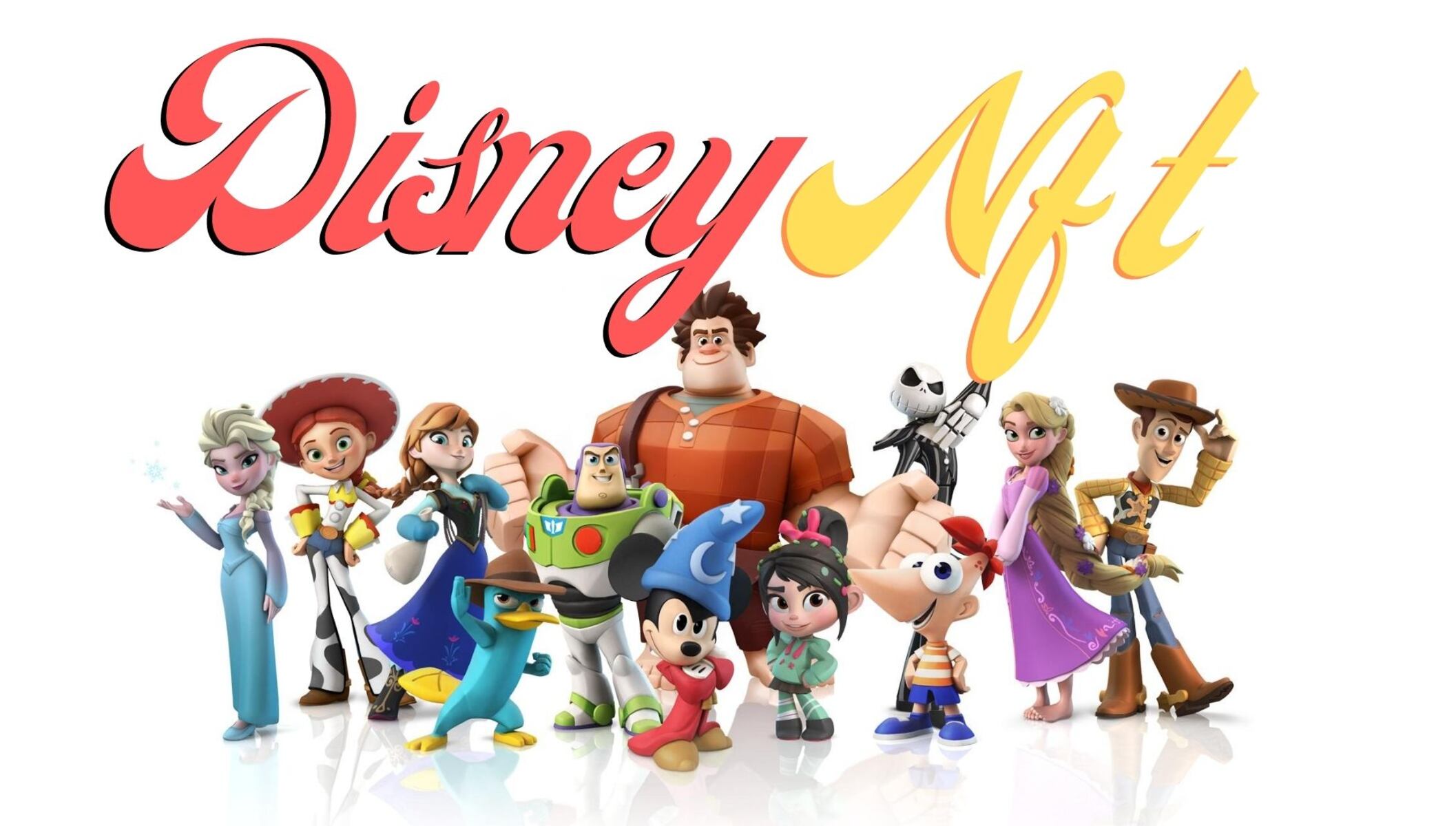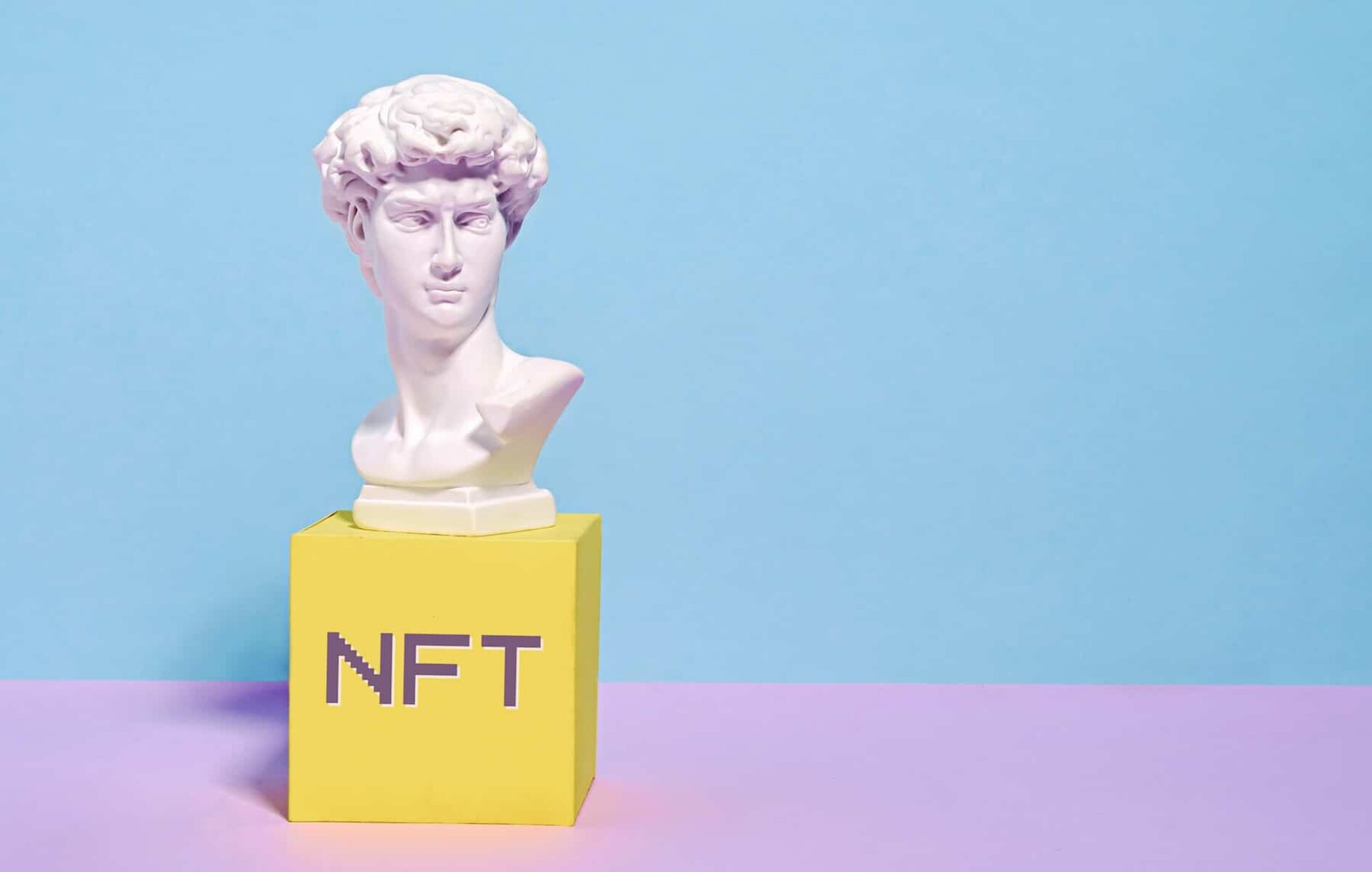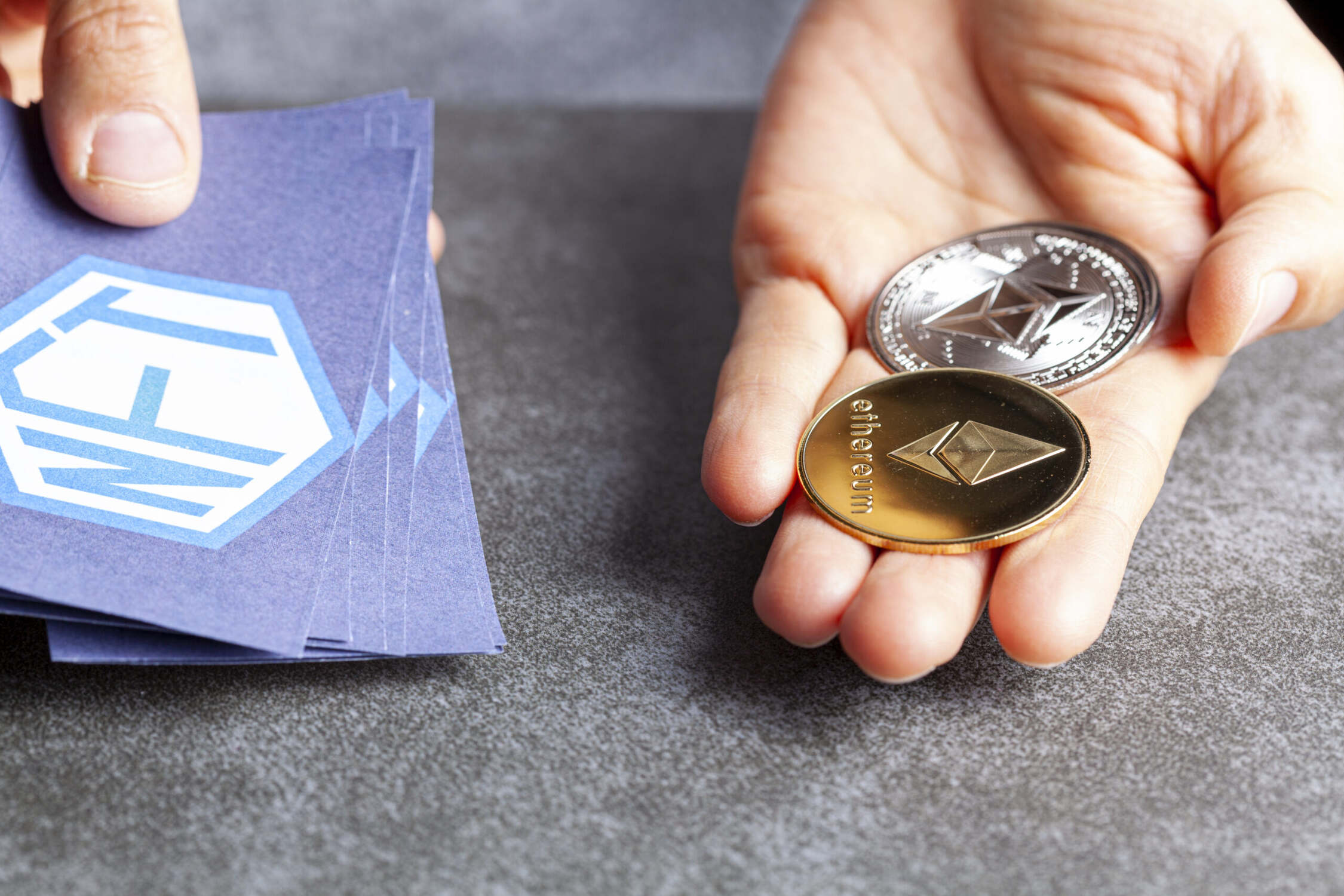Introduction
Welcome to the exciting world of Non-Fungible Tokens (NFTs)! In recent years, the rise of NFTs has revolutionized the digital art and collectibles market, opening up new possibilities for artists, collectors, and investors alike. If you’re curious about how to buy an NFT and want to participate in this innovative space, you’ve come to the right place.
So, what exactly is an NFT? Unlike traditional cryptocurrencies such as Bitcoin or Ethereum, which are fungible and can be exchanged on a one-to-one basis, NFTs represent unique digital assets that cannot be replicated or substituted. Each NFT contains distinct information and properties that set it apart from other tokens, making it truly one-of-a-kind.
There are several reasons why you may be interested in buying an NFT. For art enthusiasts, NFTs provide access to a diverse range of digital artwork created by talented artists from around the world. These digital creations can be displayed and enjoyed in various virtual galleries and museums.
Additionally, buying NFTs can be seen as a form of investment. Just like physical collectibles, the value of NFTs can fluctuate over time, offering the potential for significant appreciation. Some NFTs have even sold for millions of dollars, garnering attention from both investors and the general public.
Before diving into the process of buying an NFT, it’s essential to conduct thorough research on the available digital marketplaces. There are numerous platforms where NFTs are bought and sold, each with its own unique features and offerings. By understanding the marketplace landscape, you’ll be better equipped to find the right platform that suits your preferences and goals.
Once you’ve identified the marketplace you wish to use, the next step is to create a digital wallet specifically designed for holding and managing your NFTs. This wallet will serve as your digital vault, storing your tokenized assets securely. Each marketplace may have its recommended wallets, so be sure to follow their guidelines accordingly.
What is an NFT?
If you’re new to the world of NFTs, it’s essential to understand what exactly they are and how they differ from traditional cryptocurrencies. NFT stands for Non-Fungible Token, with the term “non-fungible” highlighting the uniqueness and individuality of these digital assets.
Unlike popular cryptocurrencies like Bitcoin or Ethereum, where one unit can be exchanged for another identical unit, NFTs are distinct and cannot be directly swapped with one another. Each NFT possesses its own unique characteristics, making it invaluable and irreplaceable.
NFTs are built on blockchain technology, similar to cryptocurrencies. Blockchains are decentralized digital ledgers that record and verify transactions, ensuring transparency and security. However, while cryptocurrencies primarily serve as mediums of exchange, NFTs represent ownership or proof of authenticity for a specific digital asset.
One of the key characteristics of NFTs is their ability to represent various forms of digital content, including art, music, videos, virtual real estate, and even virtual goods in video games. This allows creators to tokenize their work and sell it directly to consumers, eliminating the need for intermediaries and enabling artists to earn royalties from subsequent sales.
The ownership and authenticity of an NFT are recorded on the blockchain, providing a transparent and verifiable history of the asset’s ownership. This unique feature gives NFTs value and has attracted a diverse range of individuals, from artists and collectors to investors.
It’s important to note that owning an NFT does not necessarily grant the buyer copyright or intellectual property rights to the underlying content. The original creator of the digital asset generally retains those rights, while the NFT acts as proof of ownership.
The value of NFTs is determined by various factors such as scarcity, demand, provenance, and the reputation of the creator. High-profile sales and collaborations with prominent artists have bolstered the market and driven up prices for certain NFTs.
While the concept of owning a purely digital asset may be new to some, NFTs have garnered immense popularity and attention in recent years. Whether you’re interested in supporting artists, investing in digital collectibles, or simply exploring the boundaries of digital ownership, NFTs offer a unique and exciting opportunity in the digital landscape.
Why should you buy an NFT?
The world of Non-Fungible Tokens (NFTs) has gained significant traction in recent years, capturing the attention of art enthusiasts, collectors, and investors. If you’re wondering why you should consider buying an NFT, here are a few compelling reasons:
1. Access to unique digital art: NFTs have created a new era for digital art, allowing artists to showcase their creations in a unique and accessible way. By purchasing an NFT, you gain ownership of a one-of-a-kind digital masterpiece that can be displayed and enjoyed in virtual galleries or on digital screens.
2. Support for artists: Buying an NFT directly from an artist enables you to support their work and creativity. Traditional art markets often involve intermediaries that take a significant cut of an artist’s earnings. NFTs provide artists with a more direct and fair way to monetize their creations, with the potential for ongoing royalties from future sales.
3. Investment opportunities: NFTs have gained notable attention as investments, with some pieces selling for astonishing prices. While the market can be volatile, investing in NFTs can potentially yield substantial returns if you choose pieces wisely and evaluate their long-term value. However, it’s vital to conduct thorough research and understand the risks associated with this emerging market.
4. Ownership and provenance: NFTs offer verifiable proof of ownership and legitimacy for digital assets. Blockchain technology ensures that every transaction and transfer of an NFT is securely recorded, eliminating the risk of counterfeit or fake items. This transparency helps establish provenance, enhancing the value and trust associated with NFTs.
5. Collectibles and virtual goods: NFTs extend beyond art, encompassing a wide range of collectibles and virtual goods. Whether it’s owning a rare virtual item in a video game or a limited-edition digital trading card, NFTs provide a unique opportunity to own and trade digital assets that were previously inaccessible or undervalued.
6. Participating in a cultural shift: Buying NFTs allows you to be part of a groundbreaking cultural and technological movement. By embracing the concept of digital ownership, you contribute to the evolution of the art and collectibles market, shaping a future where digital assets hold immense value and significance.
While there are numerous reasons to buy an NFT, it’s essential to approach the market with caution and do your due diligence. Familiarize yourself with reputable marketplaces, research the artists and their work, and understand the potential risks and rewards associated with the NFT ecosystem.
Researching NFT Marketplaces
When it comes to buying NFTs, thorough research is crucial. There are multiple NFT marketplaces available, each with its own unique features, selection of assets, and community. Here are some essential steps to consider when researching NFT marketplaces:
1. Reputation and Trustworthiness: Start by assessing the reputation and trustworthiness of the marketplace. Look for well-established platforms with a track record of successful transactions and positive user feedback. Consider reading reviews, researching the platform’s history, and checking if it has experienced any significant security breaches or controversies.
2. Variety of Assets: Evaluate the variety and quality of NFTs available on the marketplace. Some platforms specialize in specific types of assets, such as artwork, music, or collectibles, while others offer a more diverse range. Consider your interests and preferences to find a marketplace that aligns with your desired NFT acquisitions.
3. User Experience and Interface: User experience and interface play a crucial role in navigating and using an NFT marketplace. Look for platforms with a user-friendly interface, intuitive search and filtering options, and easy-to-understand processes for buying and selling NFTs. A well-designed marketplace can enhance your overall experience and make it easier to find and acquire the assets you desire.
4. Transaction Fees and Costs: Consider the transaction fees and costs associated with buying and selling NFTs on a particular marketplace. Fees can vary significantly depending on the platform and the value of the transaction, so it’s important to understand the fees involved to ensure they align with your budget and investment goals.
5. Community and Engagement: Pay attention to the community and engagement level within the marketplace. An active and supportive community can provide valuable insights, assistance, and networking opportunities. Look for platforms that foster a vibrant and inclusive community to maximize your NFT experience.
6. Additional Features and Services: Some NFT marketplaces offer additional features and services that can enhance your buying and selling experience. These may include features like auction functionality, secondary marketplaces for reselling assets, or special events and collaborations. Assess these additional features to determine if they align with your needs and goals.
7. Platform Security: Evaluating the security measures implemented by the marketplace is essential to protect your investments. Look for platforms that employ robust security protocols such as two-factor authentication, encryption, and cold storage for storing NFTs securely. Verify that the marketplace takes proactive steps to safeguard user accounts and assets.
By conducting thorough research on the various NFT marketplaces available, you can make informed decisions and select the platform that best aligns with your goals, preferences, and budget. Remember to always stay updated with the latest news and developments in the NFT space as the landscape continues to evolve.
Creating a Digital Wallet
Before diving into the world of Non-Fungible Tokens (NFTs), you’ll need to create a digital wallet. A digital wallet is essential to securely store, manage, and interact with your NFT assets. Here are some important steps to consider when creating your digital wallet:
1. Choose a Reliable Wallet Provider: Start by selecting a reputable and trusted digital wallet provider. There are various wallet options available, ranging from web-based wallets to mobile applications. Look for wallets that support the blockchain network on which the NFTs you’re interested in are built. Some popular wallet providers include MetaMask, Trust Wallet, and MyEtherWallet.
2. Download and Install the Wallet: Once you’ve chosen a wallet provider, download and install the wallet application. Ensure that you are downloading it from the official website or a trusted source to avoid any potential security risks.
3. Set Up the Wallet: Follow the wallet provider’s instructions to set up your wallet. This typically involves creating a strong, unique password and securely storing your wallet’s recovery seed phrase. The recovery seed phrase is crucial as it can be used to restore access to your wallet in case of losing or forgetting your password.
4. Secure Your Wallet: Take steps to secure your wallet to protect your NFT assets. Enable any additional security features offered by the wallet provider, such as two-factor authentication or biometric verification. Be cautious of phishing attempts and only interact with your wallet through official channels.
5. Connect to the Appropriate Blockchain Network: Depending on the NFTs you wish to buy, you may need to connect your wallet to the specific blockchain network on which those assets exist. This is typically done by adding the appropriate network within your wallet’s settings. For example, if you’re buying NFTs on the Ethereum blockchain, ensure that you’re connected to the Ethereum network.
6. Fund Your Wallet: Before you can start buying NFTs, you’ll need to fund your wallet with the appropriate cryptocurrency. Most NFT transactions require Ether (ETH) since many NFTs are built on the Ethereum network. Ensure that you have enough cryptocurrency in your wallet to cover the cost of the NFTs you intend to purchase.
7. Test with a Small Transaction: Once your wallet is set up and funded, it’s a good idea to perform a test transaction with a small amount of cryptocurrency or a low-value NFT. This allows you to familiarize yourself with the transaction process and ensure that everything is functioning correctly before committing to larger transactions.
By creating a digital wallet, you’ll have a secure and convenient way to store and manage your NFT assets. Remember to regularly back up your wallet, keep your recovery seed phrase safe, and stay cautious of potential scams or phishing attempts to safeguard your valuable NFT investments.
Choosing an NFT to Buy
Choosing the right Non-Fungible Token (NFT) to buy is an exciting part of diving into the NFT market. With a wide range of options available, it’s essential to consider several factors before making your purchase. Here are some key steps to help you choose the perfect NFT:
1. Define Your Interests and Preferences: Start by determining your interests and preferences. NFTs cover various categories such as art, music, collectibles, virtual real estate, and more. Consider what type of NFT resonates with you and aligns with your personal taste.
2. Research Artists and Creators: Explore the artists and creators behind the NFTs you’re considering. Take the time to learn about their background, artistic style, and accomplishments. Research their artistic journey, previous works, and reputation within the NFT community. This due diligence helps you understand the value and potential future appreciation of their NFTs.
3. Evaluate Rarity and Scarcity: Rarity and scarcity influence the value of an NFT. Assess how many copies of a specific NFT exist and whether it’s part of a limited edition or a unique piece. Generally, rarer and more exclusive NFTs tend to have higher perceived value.
4. Consider Historical Sales: Look into the historical sales of similar NFTs to get a sense of their market value. This information can provide insights into pricing trends, as well as help you determine if the NFT you’re considering is reasonably priced.
5. Authenticity and Provenance: Verify the authenticity and provenance of the NFT. Investigate the history and verify the legitimacy of the digital asset to ensure that the NFT you’re buying is original and legitimately associated with the creator.
6. Assess Long-Term Potential: Consider the long-term potential of the NFT you’re interested in. Evaluate factors such as the reputation of the artist or creator, the uniqueness of the concept, and the relevance of the NFT in the broader cultural landscape. Long-term value appreciation can be influenced by these factors.
7. Engage with the Community: Engage with the NFT community, participate in discussions, and seek input from experienced collectors and enthusiasts. Their insights and perspectives can help you gain a deeper understanding of the market trends, emerging artists, and potential investment opportunities.
8. Trust Your Instincts: Ultimately, trust your instincts when choosing an NFT. If a particular piece speaks to you, evokes emotions, or aligns with your personal values, it may be a worthwhile investment regardless of other factors. NFTs have an inherent personal and aesthetic appeal that should not be overlooked.
By thoroughly researching, assessing various factors, and trusting your instincts, you’ll be better equipped to choose an NFT that aligns with your interests, preferences, and investment goals. Remember that the NFT market is dynamic and evolving, so stay informed and adaptable to make informed decisions.
Bidding on an NFT
Bidding on an NFT can be an exhilarating experience, allowing you to compete with other collectors and enthusiasts for ownership of a unique digital asset. If you’re interested in participating in NFT auctions and placing bids, here are some essential steps to consider:
1. Find NFT Auction Platforms: Identify the NFT auction platforms where the NFT you’re interested in is being auctioned. Popular platforms like OpenSea, Rarible, and Foundation often host NFT auctions. Ensure that you are using reputable and trustworthy platforms for a safe and transparent bidding process.
2. Understand Auction Terms and Conditions: Read and familiarize yourself with the auction terms and conditions. Each auction may have specific rules, such as the minimum bid increment, auction duration, and any additional fees or commissions. Understanding these details is crucial to participate effectively.
3. Set a Bidding Strategy: Develop a bidding strategy based on your budget, the estimated value of the NFT, and your willingness to compete. Determine the maximum amount you’re willing to bid and stick to it. It’s essential to maintain discipline and avoid getting caught up in bidding wars that might exceed your budget.
4. Monitor the Auction: Keep a close eye on the auction to track the progress and current bidding activity. Some auction platforms provide real-time notifications or bidding alerts to help you stay informed. Being actively engaged will allow you to adjust your strategy based on the competition and make informed decisions.
5. Bid at the Right Time: Timing can be crucial in NFT auctions. Consider bidding closer to the end of the auction to avoid unnecessarily driving up the bidding price earlier on. However, be mindful of the risk of missing out if someone else places a higher bid at the last minute.
6. Place Your Bid: Once you’re ready to place a bid, carefully enter the amount you wish to bid according to the auction platform’s instructions. Double-check your bid amount and ensure that you have sufficient funds in your digital wallet to cover the bid and any associated fees.
7. Keep an Eye on Counterbids: After placing a bid, be prepared for counterbids from other participants. Some auction platforms may allow automatic counterbidding, while others require manual intervention. Stay engaged and decide whether you want to increase your bid to maintain your position.
8. Determine Your Exit Strategy: Have an exit strategy in mind if the bidding goes beyond your maximum budget. It’s important to know when to gracefully step away and avoid overextending yourself financially. Remember that there will always be other opportunities to acquire NFTs that align with your interests and budget.
Participating in NFT auctions can be both thrilling and competitive. By understanding the auction process, setting a bidding strategy, and monitoring the auction closely, you can increase your chances of acquiring the desired NFT at a fair price.
Purchasing an NFT
Purchasing a Non-Fungible Token (NFT) is an exciting moment that allows you to officially own a unique digital asset. If you’re ready to make a purchase, here are the key steps to follow:
1. Confirm Your Wallet Balance: Before making a purchase, ensure that your digital wallet contains sufficient funds to cover the cost of the NFT. Most NFT transactions require the cryptocurrency associated with the blockchain network on which the NFT is built. For example, Ethereum (ETH) is commonly used for purchasing NFTs on the Ethereum blockchain.
2. Locate the NFT: Find the NFT you wish to purchase. You can do this by browsing NFT marketplaces and exploring different categories, collections, or artist profiles. Utilize search filters and sorting options to refine your search and narrow down the selection.
3. Review the NFT’s Details: Thoroughly review the details of the NFT, including its description, images, videos, and any additional information provided by the creator. Pay attention to the authenticity, rarity, and provenance of the NFT to ensure its value aligns with your expectations.
4. Consider the Price: Evaluate the price of the NFT and decide whether it fits within your budget. Prices can vary significantly based on factors such as the artist’s reputation, scarcity, and demand. Assess the fair market value of the NFT by considering historical sales data and similar offerings in the current market.
5. Initiate the Purchase: Once you’ve made your decision, click on the “Buy” or “Purchase” button provided by the NFT marketplace. This will typically prompt you to confirm the transaction and provide permission for the marketplace to debit the required amount from your digital wallet.
6. Confirm the Transaction Details: Double-check the transaction details, including the NFT’s title, price, and any associated fees or gas costs required by the blockchain network. Confirm that you are buying the intended NFT at the correct price before proceeding.
7. Approve the Transaction: Depending on the NFT marketplace and your wallet provider, you may need to approve the transaction within your wallet. Review the transaction details once again to ensure accuracy and then approve the transaction according to the instructions provided by your wallet provider.
8. Wait for Confirmation: After approving the transaction, it will be broadcasted to the blockchain network for verification and confirmation. This process may take a few minutes or longer, depending on the network’s congestion. Once the transaction is confirmed, you will officially become the owner of the NFT.
9. View and Manage Your NFTs: Access your digital wallet or the NFT marketplace’s user interface to view and manage the NFT you have purchased. You can typically access details about the NFT, view it in your collection, and decide whether to keep it, display it, or potentially sell it in the future.
Remember that buying an NFT comes with risks, and it’s crucial to conduct research, exercise caution, and only invest funds you can afford to lose. By following these steps and being mindful of the details, you can confidently purchase an NFT and participate in the exciting world of digital ownership.
Storing and Managing Your NFTs
Once you have purchased Non-Fungible Tokens (NFTs), it’s important to store and manage them properly to ensure their security and accessibility. Here are some essential steps to consider:
1. Choose a Secure Digital Wallet: Select a digital wallet specifically designed for storing and managing NFTs. Ensure that the wallet is compatible with the blockchain network on which your NFTs are built. Popular wallet options include MetaMask, Trust Wallet, and MyEtherWallet. Research different wallet providers to find one that offers robust security features, such as two-factor authentication and encryption.
2. Set Up Wallet Backups: Back up your wallet to protect against the risk of losing access to your NFTs. Most wallets provide a recovery phrase or seed phrase that should be securely stored offline in multiple locations. This recovery phrase is crucial for regaining access to your wallet and NFTs in case of a lost or stolen device.
3. Maintain Wallet Security: Keep your wallet software and devices secure. Regularly update your wallet software to the latest version to benefit from security patches and improvements. Use strong and unique passwords for your wallet and consider enabling additional security measures, such as biometric authentication, whenever available.
4. Organize and Categorize Your NFTs: Develop an organizational system for your NFT collection. Categorize them based on artists, collections, themes, or any other criteria that make sense to you. Some wallets and marketplaces offer features to help you organize and tag your NFTs, making it easier to navigate and find specific assets within your collection.
5. Keep Track of Ownership and Provenance: Record information about the ownership and provenance of your NFTs. This includes details such as the original creator, the blockchain contract address, the date of purchase, and any associated transaction records. Documentation of ownership and provenance is not only valuable for your own records but can also enhance the future value of your NFTs.
6. Consider Offline Storage: For added security, consider storing a backup of your NFTs offline or using an external hardware wallet known as a cold wallet. Cold wallets keep your private keys and NFTs offline, protecting them from online threats. These devices can be disconnected from the internet when not in use, minimizing the risk of unauthorized access.
7. Stay Informed: Keep yourself updated with the latest developments in the NFT space, including security practices and any vulnerabilities that may arise. Follow reputable news sources, engage with NFT communities, and be aware of any platform-specific updates or security alerts issued by your wallet provider or marketplace.
8. Consider Insurance: Depending on the value of your NFT collection, you may want to explore insurance options. Some companies now offer insurance coverage specifically for NFTs, providing protection against theft, loss, or damage. Research and consult with insurance providers to determine if insuring your NFTs is the right option for you.
By following these steps, you can effectively store and manage your NFTs, ensuring their safety and organization. Remember, security should be a top priority when dealing with valuable digital assets. Regularly review and update your security practices to adapt to evolving threats and changes in the NFT ecosystem.
Tips for Buying NFTs
As the popularity of Non-Fungible Tokens (NFTs) continues to grow, it’s important to approach buying NFTs with care and consideration. Here are some valuable tips to keep in mind:
1. Do Your Research: Before purchasing an NFT, conduct thorough research on the artist, the NFT marketplace, and the specific NFT you’re interested in. Verify the authenticity, reputation, and historical sales records of both the artist and the marketplace.
2. Consider the Value Proposition: Assess the value proposition of the NFT. Determine what makes it unique and why it is valuable to you. Consider factors such as rarity, artistic merit, concept, utility, and the creator’s reputation. Understanding the value will help you make informed decisions.
3. Set a Budget: Determine your budget based on your financial situation and risk tolerance. Set a maximum amount you are willing to spend on an NFT and stick to it. Avoid overextending yourself financially and be prepared for the possibility of price volatility.
4. Be Mindful of Fees: NFT purchases often involve transaction fees, known as gas fees, which are required to process the transaction on the blockchain network. Take these fees into account when considering the total cost of the NFT. Additionally, some platforms may charge additional fees or commissions.
5. Look for Established Artists: Consider purchasing NFTs from established and reputable artists. Artists with a proven track record may have a stronger market presence and potential for long-term value appreciation. However, don’t discount emerging artists who show promise and artistic talent.
6. Engage with the Community: Participate in discussions and engage with the NFT community. This can provide you with valuable insights, recommendations, and exposure to new artists and NFT opportunities. Community engagement can enhance your understanding of the market and help you make informed decisions.
7. Beware of Scams: Be vigilant and avoid falling victim to scams or fraudulent NFT listings. Verify the authenticity of the NFT, scrutinize the contract address, and ensure you are purchasing from reputable platforms and verified artists. Beware of phishing attempts, fake auctions, and suspicious deals that seem too good to be true.
8. Understand the Terms and Rights: Familiarize yourself with the terms and rights associated with the NFT purchase. Read and understand the smart contract governing the NFT to know what you are entitled to as the owner. The terms could include usage rights, royalties, or limitations on future sales or transfers.
9. Diversify Your Collection: Consider diversifying your NFT collection. Explore different categories, artists, and styles. Diversification reduces the risk of overexposure to a single artist or category and allows you to experience the diversity and potential growth of the NFT market.
10. Trust Your Instincts: Ultimately, trust your instincts and choose NFTs that resonate with you personally. NFT ownership goes beyond financial investment, as it is also about supporting artists, appreciating digital art, and participating in an evolving ecosystem. Choose NFTs that bring you joy and align with your passion and values.
By following these tips, you can navigate the NFT market more confidently and make more informed decisions when buying NFTs. Stay curious, stay informed, and enjoy the unique opportunities that the world of NFTs has to offer.
Conclusion
Non-Fungible Tokens (NFTs) have emerged as a disruptive force in the digital art and collectibles market, offering a new way to buy, sell, and own unique digital assets. As you venture into the world of NFTs, keep in mind the key steps and considerations discussed in this guide.
Start by understanding what an NFT is and the reasons why you might be interested in purchasing one. Whether you’re passionate about supporting artists, exploring investment opportunities, or engaging in digital ownership, NFTs provide a range of possibilities.
Thorough research is essential when it comes to NFT marketplaces, artists, and the specific NFTs you’re interested in. Take the time to evaluate reputations, rarity, provenance, and potential long-term value before making a purchase.
Creating a digital wallet is crucial for securely storing and managing your NFTs. Choose a reliable wallet provider, set up backups, and prioritize wallet security to protect your valuable digital assets.
When buying NFTs, develop a bidding strategy for participation in auctions, be mindful of fees, and consider factors like an NFT’s value proposition, established artists, and community engagement. Stay aware of the potential for scams and fraudulent activity, and always trust your instincts.
Finally, make sure to store and manage your NFTs properly. Choose a secure wallet, organize your collection, keep track of ownership and provenance, and stay informed about the latest developments in the NFT space.
With these tips and guidelines, you’re well-equipped to embark on your journey into the world of NFTs. Embrace the opportunities, support artists, and enjoy the unique experience of owning digital assets that hold both personal and potential financial value. The NFT market continues to evolve, so remain adaptable and curious as you navigate this exciting digital landscape.







